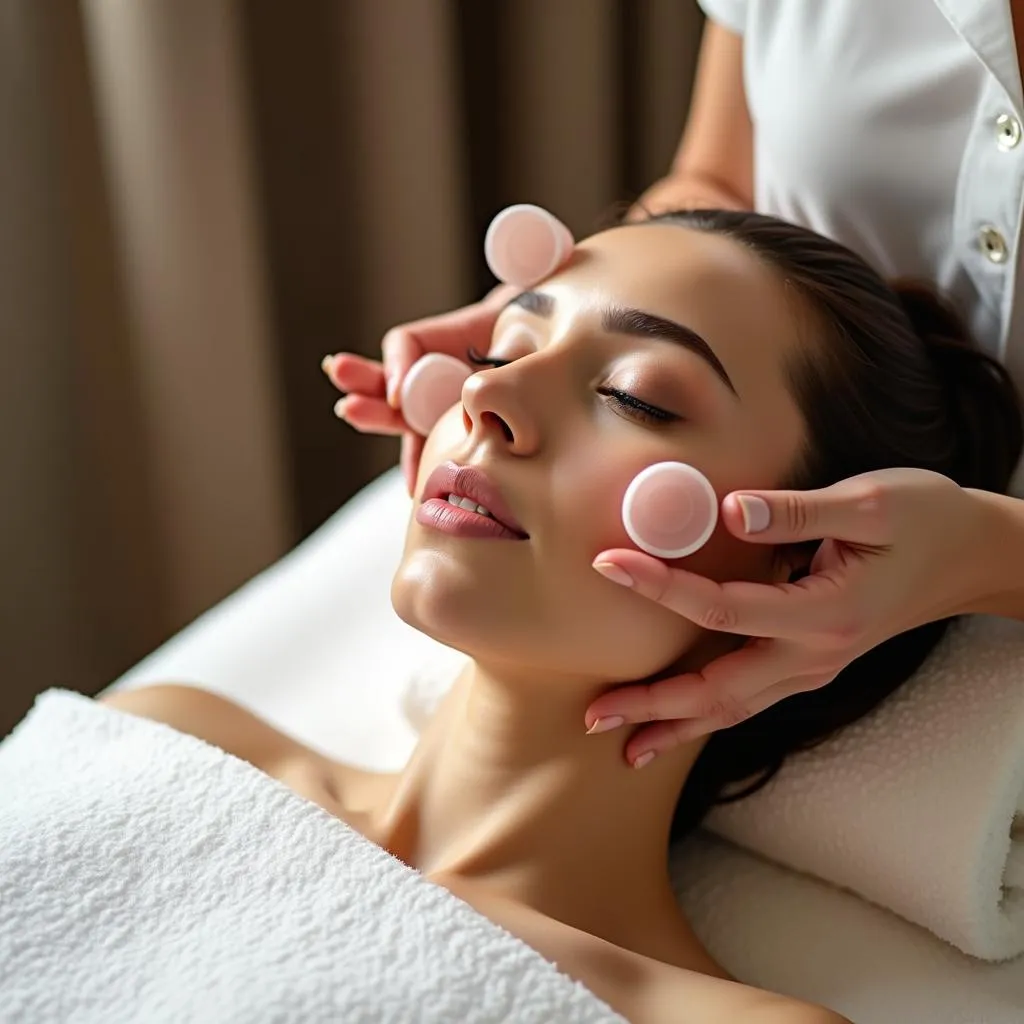Face cupping is a trendy skincare treatment that claims to reduce acne and improve skin health. It involves placing small cups on the face and creating a vacuum to suction the skin. But does face cupping for acne actually live up to the hype? This article delves into the potential benefits, risks, and what the research says about this alternative therapy.
Understanding Face Cupping
Face cupping is a derivative of traditional cupping therapy, an ancient practice used in various cultures for its therapeutic effects. In face cupping, smaller cups are used, and the suction is gentler to accommodate the delicate skin on the face. Proponents claim that face cupping can:
- Increase blood circulation: The suction created by the cups is believed to draw blood to the surface of the skin, increasing blood flow and oxygenation.
- Promote lymphatic drainage: This process helps remove toxins and waste products from the skin, reducing inflammation and puffiness.
- Stimulate collagen production: The suction may stimulate fibroblasts, the cells responsible for collagen synthesis, leading to firmer, more youthful-looking skin.
Can Face Cupping Help Acne?
The evidence supporting the use of face cupping for acne is primarily anecdotal. Some individuals report improvements in their acne after incorporating face cupping into their skincare routine. They suggest that the increased blood circulation, lymphatic drainage, and reduced inflammation contribute to clearer skin.
However, scientific research on face cupping for acne is limited. Currently, there are no large-scale, controlled studies that definitively prove its effectiveness in treating acne.
Risks and Side Effects
While face cupping is generally considered safe for most individuals, some potential risks and side effects are associated with it:
- Skin irritation: The suction can cause temporary redness, bruising, or broken capillaries, especially if done incorrectly or too aggressively.
- Pain or discomfort: Some people may find the suction uncomfortable or even painful.
- Infection: Using unsterilized cups or improper techniques can increase the risk of skin infections.
It’s crucial to seek guidance from a qualified dermatologist or licensed skincare professional before trying face cupping for acne. They can assess your skin type, any underlying conditions, and guide you on the appropriate techniques and precautions.
Precautions and Considerations
- Consult a professional: Before trying face cupping, consult a dermatologist to determine if it’s suitable for your skin type and condition.
- Find a qualified practitioner: Seek treatment from a licensed and experienced professional who specializes in face cupping.
- Use sterile equipment: Ensure that the cups are properly sterilized to prevent infection.
- Avoid overdoing it: Start with shorter sessions and gentle suction, gradually increasing the duration and intensity as tolerated.
- Listen to your body: If you experience any pain, discomfort, or unusual skin reactions, discontinue the treatment and consult your dermatologist.
Conclusion
Face cupping for acne remains a controversial topic due to the lack of scientific evidence. While some individuals may find it beneficial, it’s essential to approach this treatment with caution. Consulting a qualified dermatologist, understanding the potential risks, and using proper techniques are crucial for a safe and potentially effective experience. If you’re considering face cupping for acne, a thorough consultation with a skincare professional is essential to make an informed decision.

